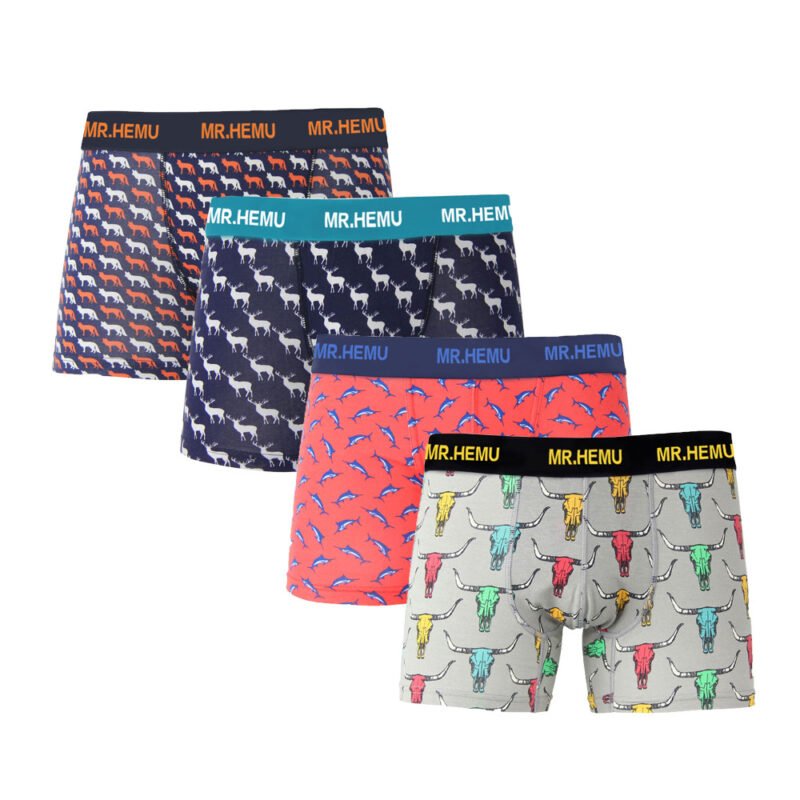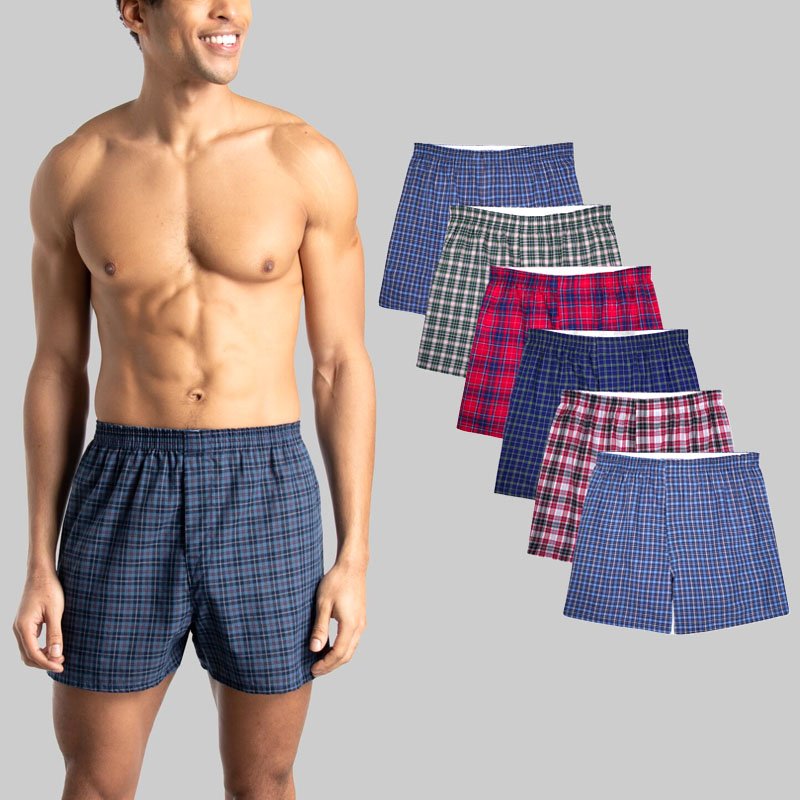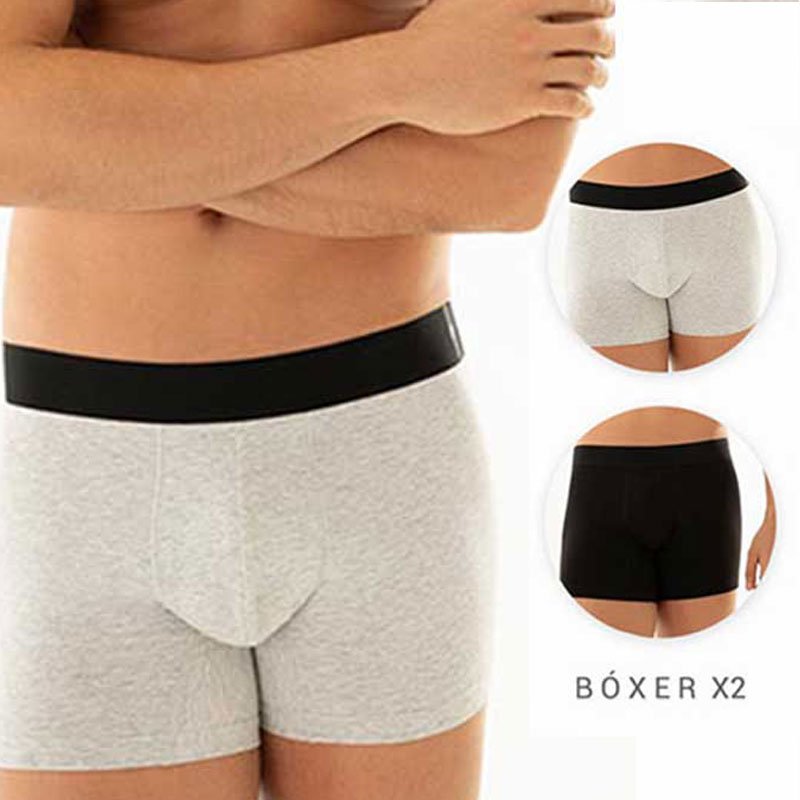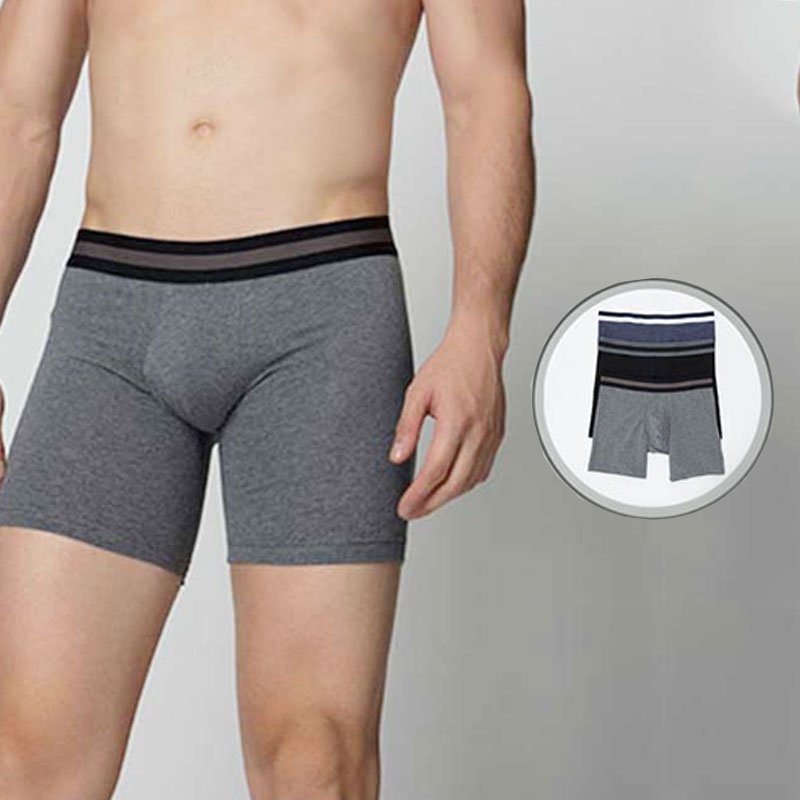Choosing the right underwear size is crucial for comfort and support, yet many men overlook this important detail. Ill-fitting underwear can lead to discomfort, chafing, and even affect your overall confidence throughout the day.
This guide will walk you through the simple steps to accurately determine your underwear size. We’ll cover everything from taking proper measurements to understanding size charts, ensuring you find the perfect fit for your body and lifestyle.
What Does Underwear Size Include
-
 Men’s underwear Boxers cotton cotton sexy and comfortable boxers Breathable U raised pants
Men’s underwear Boxers cotton cotton sexy and comfortable boxers Breathable U raised pants -
 Men’s underwear boxer shorts trend breathable pants cotton sexy boxers sports running
Men’s underwear boxer shorts trend breathable pants cotton sexy boxers sports running -
 Men’s underwear men’s cotton autumn and winter men’s four-cornered men’s non-100% cotton boxer shorts
Men’s underwear men’s cotton autumn and winter men’s four-cornered men’s non-100% cotton boxer shorts -
 Men’s underwear Long boxers Sport Lengthened inner z pants Men’s anti-wear leg running loose long leg friction anti-wear
Men’s underwear Long boxers Sport Lengthened inner z pants Men’s anti-wear leg running loose long leg friction anti-wear -
 Men’s underwear large size medium high waist sports fitness thong sexy seamless breathable three-dimensional U-shaped convex bag t pants
Men’s underwear large size medium high waist sports fitness thong sexy seamless breathable three-dimensional U-shaped convex bag t pants -
 New sports men’s underwear cotton men’s boxers Boys men’s shorts men’s boxers
New sports men’s underwear cotton men’s boxers Boys men’s shorts men’s boxers -
 Men’s underwear cotton boxers loose version cotton arrow pants large size comfortable men’s boxers
Men’s underwear cotton boxers loose version cotton arrow pants large size comfortable men’s boxers -
 Men’s underwear pure cotton boxers men’s solid color anti-bacterial pants large size simple loose boxers
Men’s underwear pure cotton boxers men’s solid color anti-bacterial pants large size simple loose boxers -
 Men’s underwear pure cotton square breathable comfortable youth four corner trend underwear men plus size loose
Men’s underwear pure cotton square breathable comfortable youth four corner trend underwear men plus size loose
When we talk about underwear size, it generally refers to the measurements that ensure a comfortable and secure fit. This isn’t just about one number, but a combination of factors that contribute to how the garment sits on your body.
Key measurements typically included in underwear sizing are:
- Waist Measurement: This is usually the primary indicator. It refers to the circumference of your natural waistline, or where your underwear band would typically rest.
- Hip Measurement: Especially important for certain styles or if you have a significant difference between your waist and hips, this measures the fullest part of your hips.
- Inseam/Leg Opening: For styles like boxer briefs or trunks, the inseam measurement (length of the leg from the crotch) and the circumference of the leg opening are crucial for comfort and to prevent riding up.
- Rise: This refers to the distance from the waistband to the crotch. Different rises (low, mid, high) will affect where the underwear sits on your torso.
- Pouch Size/Support: While not a numerical measurement on a size chart, the design and capacity of the pouch are key for male underwear, impacting comfort and support.
How to Choose Underwear Size for Male?
Finding the perfect pair of underwear is about more than just aesthetics; it’s about unparalleled comfort and optimal support throughout your day. The right size can make a significant difference in your daily experience, actively preventing uncomfortable chafing, irritation, and ensuring everything stays securely in place.
Investing a little time in understanding your needs and the nuances of sizing can vastly improve your overall well-being. Here’s a detailed guide on how to choose the ideal underwear size for men.
Understand Your Measurements
The absolute most crucial step in selecting the right underwear is to accurately measure yourself. Never rely on guesswork, or assume your usual pants size will directly translate to underwear. Underwear sizing can be surprisingly specific, and a precise measurement ensures the best fit.
To get an accurate reading, use a flexible tape measure and wrap it around your natural waistline. This is usually the narrowest part of your torso, often just above your belly button, or where your underwear band would naturally and comfortably rest. Ensure the tape is snug against your skin but not so tight that it digs in or restricts breathing. Take the measurement while standing in a relaxed posture. For some styles, measuring the fullest part of your hips and buttocks can be equally important, ensuring a comfortable fit around the seat and upper thigh, especially for boxer briefs or trunks.
Consult Size Charts Diligently
Once you have your precise measurements, the next critical step is to consult the specific size chart provided by the underwear brand you’re considering. This cannot be overstated: every underwear brand has its own unique sizing chart. A “Large” from one brand might be equivalent to a “Medium” or “Extra Large” from another. Do not assume an “L” from your favorite t-shirt brand will be the same as an “L” for their underwear.
Always navigate to the brand’s official website or the product page of the retailer and look for their dedicated size guide. This chart will usually list waist and hip measurements corresponding to their designated sizes (S, M, L, XL, etc.).
If your measurements fall between two sizes on the chart, consider your personal preference for fit. If you prefer a snug, supportive fit, leaning towards the smaller size might be appropriate. If you value a more relaxed, breathable feel, opting for the larger size could be better. Also, be mindful of international sizing conventions, as a size “M” in the US might differ from a size “M” in Europe or Asia.
Consider the Style and Material
Different underwear styles are designed to offer varying levels of coverage, support, and freedom of movement. The style you choose, alongside the material, will significantly impact how a particular size feels on your body.
Briefs offer maximum support and minimal leg coverage, with a high leg opening. They are excellent for active individuals or those who prefer a close-fitting style that won’t bunch under clothes. Boxer briefs and trunks, on the other hand, provide the support of briefs with added leg coverage, ideal for preventing chafing and offering a sleek silhouette under slim-fit clothing. Boxers, with their loose fit, offer maximum breathability and are comfortable for lounging or sleeping.
The fabric composition plays a huge role in comfort and fit. Cotton is breathable and soft, but can retain moisture. Modal and bamboo are incredibly soft, moisture-wicking, and breathable, offering a luxurious feel. Synthetic blends like polyester and spandex are often used for athletic underwear due to their moisture-wicking and quick-drying properties, providing excellent stretch and recovery which can influence how a size feels.
Read Reviews and Seek Feedback
Before making a purchase, especially if you’re trying a new brand, reading customer reviews can provide invaluable insights into their sizing and fit. Many online retailers allow customers to leave reviews, often commenting on whether the product runs true to size, smaller, or larger than expected.
Pay close attention to reviews that specifically mention if the underwear “runs small” or “runs large.” This can be a strong indicator to adjust your chosen size accordingly. Additionally, don’t hesitate to ask for advice from friends who wear the same brands for their feedback on sizing. If you’re shopping in a physical store, sales assistants often possess excellent product knowledge and can offer personalized recommendations based on your measurements and preferences.
Men’s Underwear Size Chart
Understanding an underwear size chart is essential for men seeking the perfect fit. It translates your body measurements into the manufacturer’s designated sizes, ensuring comfort and support. Here’s a breakdown of what a typical men’s underwear size chart includes and how to use it.
Underwear Size Chart for Men
| Size | Waist (inches) | Waist (cm) | Hips (inches) | Hips (cm) |
| XS | 26-28 | 66-71 | 30-32 | 76-81 |
| S | 28-30 | 71-76 | 32-34 | 81-86 |
| M | 30-32 | 76-81 | 34-36 | 86-91 |
| L | 32-34 | 81-86 | 36-38 | 91-96 |
| XL | 34-36 | 86-91 | 38-40 | 96-101 |
| XXL | 36-38 | 91-96 | 40-42 | 101-106 |
| XXXL | 38-40 | 96-101 | 42-44 | 106-111 |
Note: This is a general guide. Always refer to the specific brand’s men’s underwear sizes chart as measurements can vary. And please feel free to contact us at any time to get latest men’s underwear size chart.
Mens Underwear Size Guide

A men’s underwear size guide is your essential tool for ensuring a comfortable and supportive fit. It deciphers how manufacturers translate body measurements into their standardized sizes, preventing the common issues of pinching, riding up, or sagging. Understanding these guides is the first step towards investing in underwear that feels good all day long.
These guides typically focus on key body measurements, often presented in a chart format. While waist measurement is usually the primary determinant, some guides will also include hip measurements, especially for styles that offer more coverage. Always measure yourself accurately and compare these numbers against the brand’s specific chart, as sizing can vary significantly between different manufacturers.
Key measurements typically included in men’s underwear size guides are:
- Waist Circumference: The most common measurement, taken around your natural waistline where the waistband of the underwear will sit.
- Hip Circumference: Measured around the fullest part of your hips and buttocks, important for ensuring a proper fit for boxer briefs and trunks.
- Inseam/Leg Opening: For styles with legs (e.g., boxer briefs, trunks), some guides may offer insights into the length or the circumference of the leg opening to prevent tightness or riding up.
- Rise: Though not always a numerical measurement on a chart, the guide might describe the rise (low, mid, high) of their different styles, which indicates where the underwear will sit on your torso.
Conclusion
Choosing the right underwear size ensures comfort and support. By following these simple tips—measuring accurately and understanding brand variations—you can avoid common fit issues and enhance your daily comfort.
A well-fitted pair of underwear significantly impacts overall well-being, preventing chafing and discomfort. Invest a little time in finding your perfect size for a noticeable improvement in how you feel throughout the day.
For wholesale underwear needs, consider exploring options from Friendtex. They offer a range of sizes and styles to meet various requirements, ensuring quality and fit for your customers.

